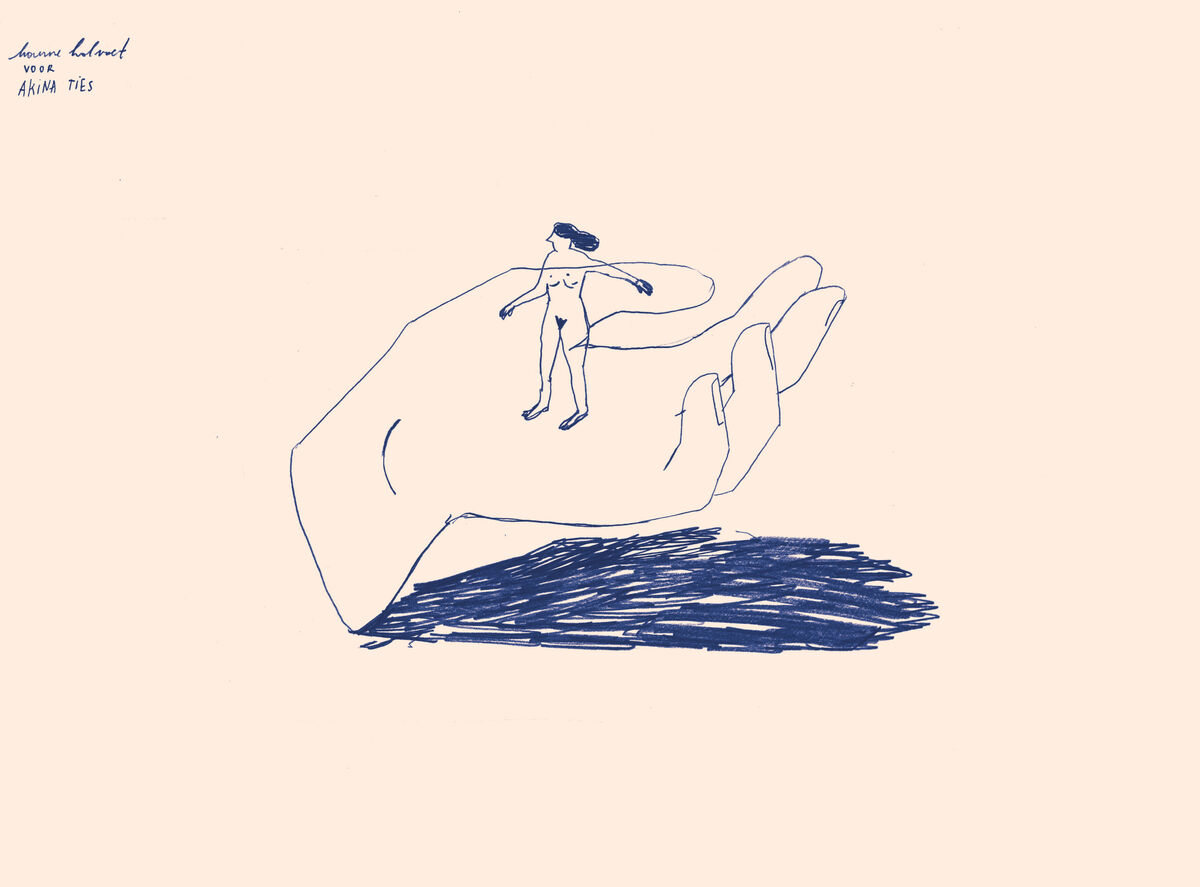Fieldnotes
An illustrated magazine on Citizen Science
Poster series on Female Genital Cutting research

Illustration by Hanne Holvoet
Female Genital Cutting (FGC) is still commonly practiced in at least 30 countries in Africa, Asia and the Middle East. One of its most notable current trends is its medicalisation. On the one hand, medicalising the practice can be seen as a way of reducing adverse health consequences and is associated with less severe forms of FGC. On the other hand, medicalisation may serve to legitimise FGC and might therefore counteract efforts to abandon the practice completely. Nina Van Eekert explores trends in the medicalisation of FGC and how they are associated with the social positions of women in their communities. She focusses on Egypt, where over half of the world’s medicalised cuts are performed and where both medicalisation rates and FGC prevalence remain high, and Kenya, the only country where increased medicalisation rates coincide with an overall decrease in FGC prevalence.
Access to material resources allows women to make choices, gives them alternative sources of empowerment, other than FGC, and removes some of the social pressure to cut. FGC is also linked with marriage and dowry tradition and so empowering women to make their own choices and enabling families to survive without dependence on a dowry are important both for women’s rights and for the fight towards poverty reduction in general. With this in mind, various artists were asked to work around the themes of FGC, vagina, clitoris, and women’s emancipation – and we simply love the result. The prints are being sold by Collectief Positief with all profits going towards sending girls to an emancipating ‘girlie camp’, organised by Akina Ties.
Nina Van Eekert is a PhD Candidate both at the Centre for Population, Family and Health (University of Antwerp) and the International Centre for Reproductive Health (Ghent University). As a sociologist and social worker, she strongly believes in the importance of science to drive social change. With her current research on Female Genital Cutting (FGC) and its medicalisation she wants to stress the importance of women’s emancipation in the fight towards the abandonment of FGC.
Unfortunately, university research often remains within what I call ‘the written world of academics’. Combining research with art makes it much more accessible, and for a broader audience. For me it is equally important to do research, as to communicate how research can lead to change. Therefore, I think we cannot emphasise enough the importance of women’s emancipation as a driver for change. I am very happy to be able to this in collaboration with Collectief Positief and these wonderfully creative artists.
Marian van de Weerd illustrates under her pseudonym “Marie-Jan”, bringing humour and emotion to her audience via her tiny people.
Combining creativity and charity to increase awareness and visibility is something I’m more than happy to participate in. Translating difficult and sensitive topics into an illustration that also conveys something positive is a challenge I’ll gladly take on, because getting people involved through art always seems to be working.
The inaugural event took place at the University of Antwerp, an interesting evening which started with a documentary about FGC, followed by a panel discussion. The panel consisted of Paulien Beckaert, former nurse at Fedasil counselling survivors of FGC and now working for GAMS (Group for the Abolition of Female Genital Mutilation), Fatimetou Sow Deyna, a journalist and FGC survivor who migrated from Mauritania to Belgium to rescue her daughter from FGC and the social scientist Nina Van Eekert. At the end of the evening there was an exhibition of the prints made for Collectief Positief and Akina Ties. The prints were introduced by a beautiful reading of the poem, ‘Bilakoro Mousso,’ by Anke Verschueren and Mona Thys.
In March 2020 the exhibition ‘#freethepunani’ will be held at ‘Meerminne’ at the city campus of the University of Antwerp. Further 2020 exhibition dates to be announced for various venues throughout Antwerp.
An illustrated magazine on Citizen Science